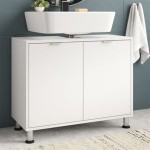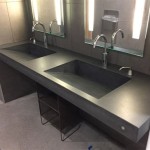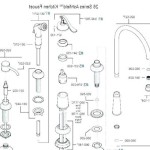How to Install a Bathroom Sink Drain Without Overflow
Installing a bathroom sink drain without an overflow is a relatively simple plumbing task, but it requires careful attention to detail and proper materials. This guide will walk you through the steps involved in this installation process, providing essential information and tips to ensure a smooth and successful project.
Step 1: Gather Necessary Materials and Tools
Before you start, gather all the necessary materials and tools to ensure a seamless installation. These include:
- Sink drain assembly: This usually includes the drain body, tailpiece, and strainer. Ensure your chosen assembly is designed for a sink without an overflow.
- Plumber's putty or silicone sealant: Seal the drain body and prevent leaks.
- Adjustable wrench: Tighten and loosen nuts and fittings.
- Channel-lock pliers or slip-joint pliers: Tighten and loosen nuts and fittings.
- Basin wrench: Access and tighten nuts in hard-to-reach areas.
- Level: Ensure the sink is properly aligned.
- Measuring tape: Determine the length of the tailpiece needed.
- Utility knife: Cut the tailpiece to the correct length.
- Screwdriver: Secure the strainer to the sink.
- Bucket: Catch any spilled water.
Step 2: Prepare the Sink and Drain Hole
The next step is to prepare the sink and drain hole. Ensure the sink is free of any debris and water. If necessary, use a cleaning agent to remove any residue. Then, examine the drain hole and ensure it is clean and free of any obstructions. If you notice any rough edges or burrs, smooth them out with sandpaper for a seamless installation.
Step 3: Install the Drain Body
The drain body is the main component of the sink drain assembly. This is where you need to be meticulous as proper placement is crucial. Apply a generous amount of plumber's putty or silicone sealant around the base of the drain body. The sealant should form a ring around the drain body, ensuring a tight seal and preventing leaks. Now, carefully position the drain body in the sink's drain hole. Push the drain body firmly into the hole until it sits flush with the sink's surface. Ensure the drain body is centered and even with the sink hole.
Step 4: Connect the Tailpiece
The tailpiece is the pipe that connects the drain body to the drainpipe below. It is essential to choose a tailpiece that is the appropriate length for your installation. Use a measuring tape to determine the distance between the drain body and the drainpipe. Cut the tailpiece to the correct length using a utility knife or saw. Ensure the tailpiece has a slip-joint nut at one end and a threaded end at the other. Thread the tailpiece into the drain body and secure it with the slip-joint nut.
Step 5: Connect to the Drainpipe
Once the tailpiece is connected to the drain body, it's time to connect it to the drainpipe beneath the sink. This is usually a P-trap, which prevents sewer gases from entering the home. Thread the threaded end of the tailpiece into the P-trap. Tighten the connection using an adjustable wrench or pliers.
Step 6: Install the Strainer
The strainer is the final component of the sink drain assembly. It prevents solid objects from entering the drain and causing blockages. The strainer screws into the drain body. Secure the strainer by tightening the screw on the underside of the sink.
Step 7: Test the Drain
After the drain is installed, it's essential to test it to ensure there are no leaks. Turn on the water and let it flow through the sink. Carefully inspect all connections and joints for leaks. If you notice any leaks, tighten the connections and apply additional sealant, if necessary. Once you are sure there are no leaks, you can turn off the water supply.
Step 8: Secure and Support the Sink
After testing the drain for leaks, it is time to secure the sink to the countertop. Using a level to ensure the sink is properly aligned, fasten the sink to the countertop with brackets or clips.
Installing a bathroom sink drain without an overflow is easier than it may seem. By following these steps and taking your time, you can successfully complete the project. Remember to use high-quality materials and work in a safe and clean environment. If you have any doubts about this process, it is always best to consult with a professional plumber.

Keeney 1 4 In Push On Bathroom Sink Drain Without Overflow Brushed Nickel K820 76bn The Home Depot

Decorative Push On Sink Drain Without Overflow

Bathroom Vessel Sink Pop Up Drain Without Overflow Chrome Finish

Pf Waterworks Clogfree Never Clog Pop Up Drain Magnetic Stopper Transpa Abs W Overflow 1 6 2 Sink Hole Oil Rub Broe Pf0324 Orb Tr The Home Depot
Drain Spacer Gasket Kit For Bathroom Sinks

Bathroom Sink Without Overflow In Spot Free Stainless Steel Kraus

Keeney 1 4 In Push On Bathroom Sink Drain Without Overflow Polished Chrome K820 76 The Home Depot

Sink Drain Without Overflow Bathroom Pop Up Assembly Stopper Vessel Com

How To Install A Vessel Sink Drain Without Overflow Step By Guide

Bathroom Sink Pop Up Drain Stopper Small Cover Without Overflow Kpw101 Kibi Usa
Related Posts







